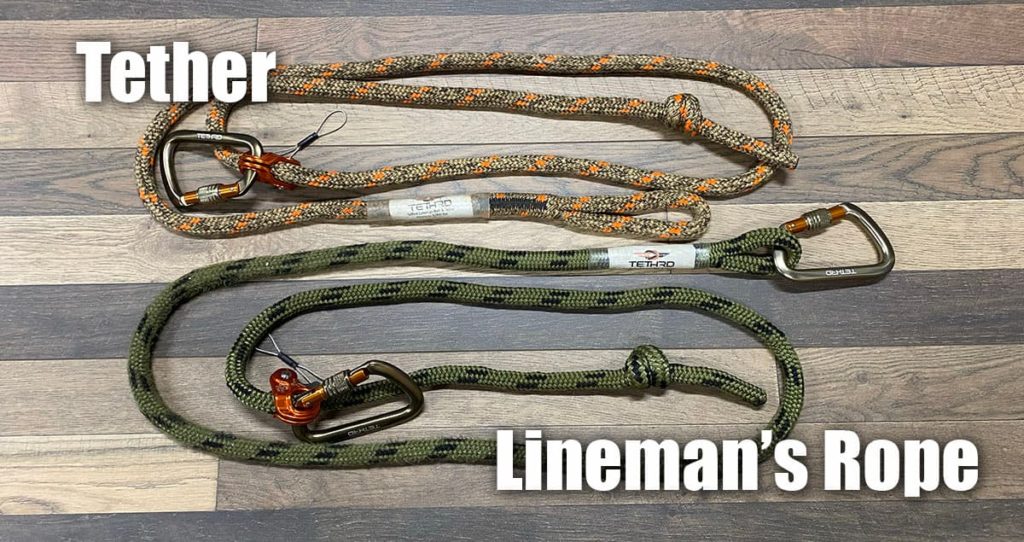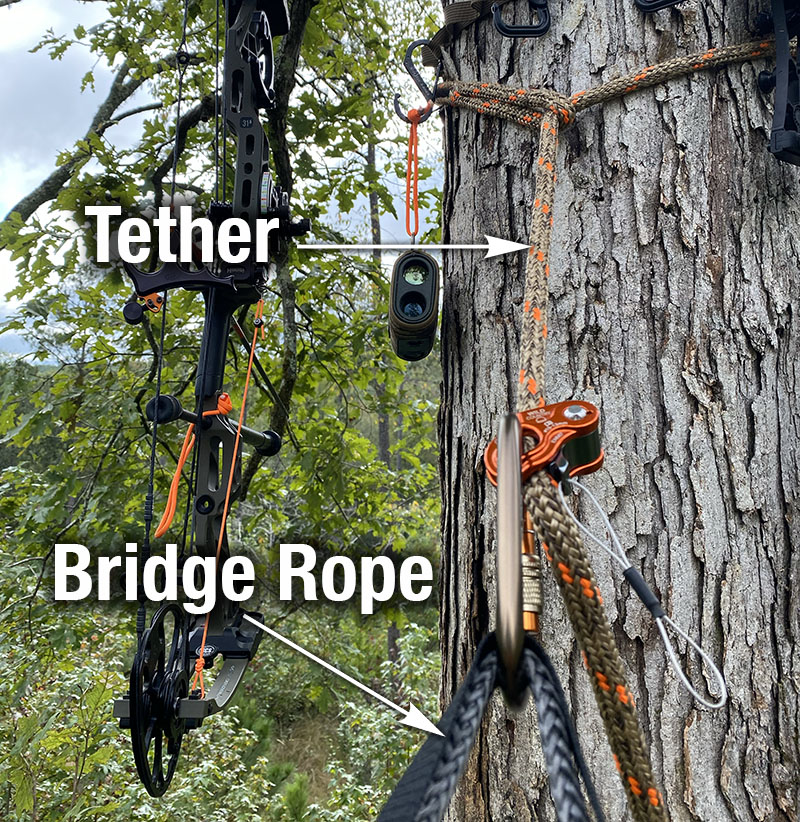Choosing the Right Ropes for Saddle Hunting
Saddle hunting has gained significant traction among hunters in recent years, primarily due to the mobility and versatility it provides. A critical component of this hunting method is selecting the right ropes to ensure safety and success in the field.
This article provides a comprehensive guide to understanding what ropes you need to saddle hunt, and how to choose the best ones by understanding the various types, materials, diameters and other key factors.

Ropes Used in Saddle Hunting
The three primary ropes used in saddle hunting are the tether, lineman’s rope, and the bridge rope. If you decide to give one-stick saddle hunting a try, then you will need a rappel rope in place of your tether.
Each of these four ropes has a unique function and application in the saddle hunting setup:
Tether
A tether is usually made from static rope (more on that below), chosen for its minimal stretch and high strength, which ensures stability and safety while the hunter moves and shifts their weight. It often features an adjustable prusik knot, or some type of mechanical ascender, allowing the hunter to adjust the tether’s length for optimal positioning.
The tether rope is what keeps a saddle hunter attached to the tree at their desired hunting height. It goes around the tree at roughly head height, with the unlooped end pulled through the looped end to cinch it tight around the tree. The prusik knot or ascender on the loose end of the tether is then connected to the bridge rope of the saddle with a carabiner (see the photo below for reference).
Lineman’s Rope
A lineman’s rope is very similar (or in some cases identical) to the tether. It runs from one side of the saddle around the tree and back to the other side of the saddle, acting as a safety line and providing support while the hunter moves up or down the tree. It also allows the hunter to remain hands-free while hanging climbing sticks or a platform to the tree.
Like the tether, a lineman’s rope should be a static rope to ensure stability and should have an adjustable knot or ascender to secure the hunter’s position as they climb.
Typically the only difference between a lineman’s rope and a tether is the size of the loop at the end of the rope. A tether will have a larger loop to allow the free end of the rope and prusik knot or ascender to be pulled through.
Bridge Rope
The bridge rope connects the saddle to the tether, serving as a crucial link between the hunter and the tree. It’s typically made of a strong, low-stretch material to ensure stability and support. It will be a smaller diameter than the tether and lineman’s rope.
The bridge rope’s length can be adjusted according to the hunter’s preference, which can affect comfort and the range of motion while in the saddle. Most hunting saddles sold commercially today feature a built-in adjustable bridge, so it’s not something you’ll have to buy separately.

Rappel Rope
A rappel rope is used for controlled descending from the tree after a hunt. Saddle hunters may use a rappel rope as an additional safety measure or simply for a more comfortable and efficient descent after the hunt. The rappel rope will be very similar to the tether, except it needs to be long enough to go around the tree and reach the ground. I would recommend a minimum of 30 feet.
It is crucial to use a descending device like a figure-eight descender or an auto-locking belay device to manage the rope during descent. A static rope is recommended for rappelling as it provides better control and minimizes the risk of a sudden drop due to stretch.
Factors to Consider When Choosing Ropes
Rope Diameter
Rope diameter is an essential factor to consider when choosing ropes for saddle hunting, as it directly impacts the rope’s strength, weight, handling, and knot-tying ability. Understanding the significance of rope diameter can help hunters make informed decisions when selecting ropes for their saddle hunting setup.
Most ropes used for saddle hunting have a diameter between 8-11mm (roughly 5/16 to 7/16 inches), and most saddle manufacturers offer ropes at each end of that spectrum.
The smaller diameter ropes offer an overall reduction in both weight and bulk, giving them an advantage in the field. The tradeoff is that the smaller diameter ropes won’t work with some ascenders like the Ropeman 1, and they are typically a little more expensive.
Static vs. Dynamic
If you opt to buy material to build your own saddle hunting ropes, there are several other options you need to be aware of to ensure you end up with a good, safe set of ropes that will last you years to come.
One of the first decisions you’ll need to make is choosing between a static or dynamic rope. Static ropes have minimal stretch and are ideal for climbing, positioning, and descending. They are commonly used in saddle hunting for tethering and lineman’s belts.
Dynamic ropes, on the other hand, stretch under load to absorb impact forces. They are primarily used for rock climbing applications, and are not ideal for saddle hunting due to their elasticity.
Spliced Eye vs. Knot
You’ll need an eye on the end of each of your ropes. If you’re buying your rope in bulk, that will leave you with two options: you can create an eye by tying a knot in the end of the rope or you can have the rope company splice an eye on the rope for you. Obviously the knot is a free option, but it will increase the overall weight and bulk of the rope. If you can afford the extra charge, I would highly recommend having them splice a 5-inch eye on the end of the rope for you.
E. Water resistance and weatherproofing: A rope should be resistant to water absorption and maintain its strength when wet, as hunting conditions can be unpredictable.
Final Thoughts
Selecting the right ropes for saddle hunting is crucial for safety, comfort, and success in the field. Consider factors like strength, weight, diameter, material, and water resistance when choosing a rope, and pay attention to proper rope care and maintenance. With the right rope selection and care, your saddle hunting
